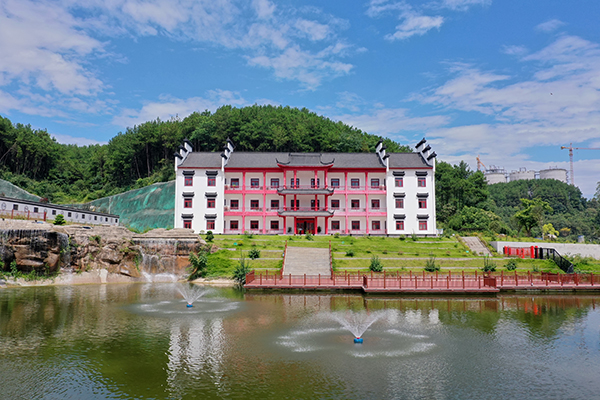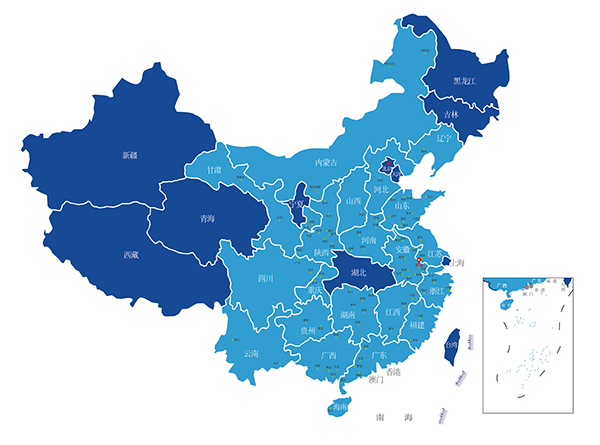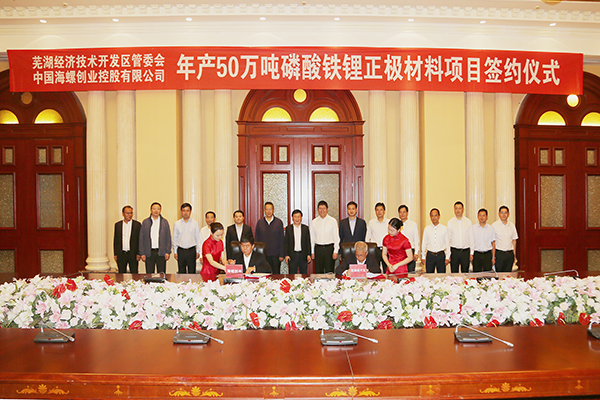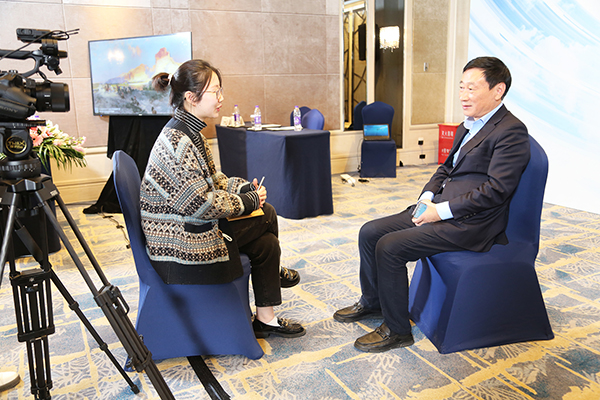




Recently, Guo Jingbin, chairman of Conch Venture, was invited to participate in a special interview of “China Securities Journal” on “Conch Entrepreneurship under the Background of Carbon Neutrality”. Incineration and landfill are the first to adopt cement kiln co-processing technology to open up the last mile and achieve "dry and squeeze"; at the same time, the resources of the cement plant are fully utilized. This process route helps the cement industry to reduce costs.".

He revealed that China Conch Environmental Holdings Limited, a subsidiary of Conch Venture (00586HK), will undergo a spin-off and plan to go public on the main board of the Hong Kong Stock Exchange.
In addition, for Conch Ventures' cross-border investment in new energy battery cathode material projects that have attracted much market attention, Guo Jingbin said that while developing lithium iron phosphate business, the company can make use of Conch's strength in environmental solid and hazardous waste disposal when deploying lithium battery recycling business. The valuable metals such as lithium and manganese are extracted, and cathode materials are rebuilt to form a complementary industrial chain.
Conch environmental protection focuses on its main business
Conch Environmental Protection is an environmental protection enterprise engaged in the disposal of industrial solid and hazardous waste, and is a wholly-owned subsidiary of Conch Venture. It uses cement kiln co-processing technology to provide one-stop industrial solid and hazardous waste solutions, covering the entire process of collection and transportation, testing and storage, compatibility and transmission, disposal and incineration.

Cement kiln co-processing technology refers to the use of cement kiln's characteristics of large thermal melting and high temperature to fully burn waste, in which organic matter is directly burned, and inorganic heavy metal salts are degraded and solidified into clinker crystals, thereby achieving harmless treatment . It is worth mentioning that the heat generated by burning waste can be used for cement production, and the “residue” produced can also be used as an auxiliary material for cement production. This recyclable production process effectively reduces costs and increases efficiency, turning the cement industry into a green economy.

Guo Jingbin said that according to industry data analysis, although this new type of disposal method that replaces the traditional incineration and landfill method currently has a market share of only close to 10%, the future can be expected. The short-term goal in the future is to achieve an annual processing capacity of 10 million tons by 2023.
According to the data, Conch Environmental has become China’s largest waste disposal service provider in 2020. It is also China’s largest service provider using cement kiln co-processing technology to dispose of solid and hazardous waste, accounting for 21.7% of the cement kiln co-processing market share (according to the disposal in operation) Capacity calculation).
From 2018 to 2020, the company's operating income was 397 million yuan, 738 million yuan and 1.144 billion yuan, respectively, with a compound annual growth rate of 69.8%. As of the end of 2020, the company's solid and hazardous waste disposal gross profit margin was 65.5%. In the first half of this year, the company accelerated project development and achieved operating income of 740 million yuan, a year-on-year increase of 91.3%.

During the interview, Guo Jingbin introduced to a reporter from the China Securities Journal that there are currently 87 solid and hazardous waste projects in 21 provinces and regions including Anhui, Fujian, Gansu, Guangdong, and Guangxi, and a nationwide service network has been established. At the same time, Conch Venture focuses on the research of new technologies for environmental protection industry and carbon reduction, and establishes academician workstations and "dual-carbon" research institutes to carry out environmental protection business around "dual-carbon". "We have independently researched and developed fly ash multi-stage water disposal technology, oxygen-free dry distillation technology, cement kiln collaborative treatment technology, etc., and have nearly 50 patents to promote the development of environmental protection business."
Since the company acquired the Shaanxi Anyaobai project in 2015 and successfully entered the cement kiln co-processing market, it has established stable strategic partnerships with the top domestic cement companies Conch Cement, China National Building Materials, Mengxi Group, etc., and achieved a wide range of business layouts .
Explore the complementary model of lithium battery business
At the same time as the spin-off and listing, Conch's cross-border activities have attracted much market attention. Conch Venture recently announced that it has signed an investment agreement with Wuhu Economic Development Zone to plan and build a 500,000 tons of high-performance lithium iron phosphate new energy battery cathode material project. Among them, the investment in the first phase of the project is about 1 billion yuan, and it is planned to build a lithium iron phosphate cathode material project and supporting facilities with an annual output of 50,000 tons.

Guo Jingbin told the China Securities Journal reporter that the first phase of the project plans to build two production lines, each with an annual production capacity of 25,000 tons. Except in Wuhu, Anhui, Conch Venture will make a nationwide deployment based on the regional distribution of the lithium battery industry, and eventually reach a production capacity of 500,000 tons. The first phase of the project is piling and is expected to be put into production in November or December next year. During the process, a sample will be made for use in the lithium battery factory. At present, it has docked with downstream customers such as battery manufacturers in Wuhu.

Why do solid waste companies fall in love with new energy materials? Guo Jingbin explained that while developing the lithium iron phosphate business, the company is deploying lithium battery recycling business, that is, recycling and extracting metals such as lithium and manganese for reuse as cathode materials. The recycling process will involve solid and hazardous waste treatment companies, namely Conch Environmental Protection.
The layout of the lithium battery material track and the existing solid and hazardous waste business disposal track are similar and complementary. Lithium batteries include positive electrode materials, negative electrode materials, separators, electrolytes, etc., with a lifespan of 8 years. After recycling, they become hazardous waste. Conch Environmental Protection uses its own solid and hazardous waste treatment technical advantages to remove valuable metals such as lithium and manganese. Extract them to manufacture cathode materials, forming a coordinated and complementary industry chain. Lack of talents is a problem that restricts the crossover of enterprises. Lithium iron phosphate cathode material is an emerging industry, and the company will actively introduce relevant talents.

A few days ago, the construction plan of Conch Venture Jiading Headquarters Project was released, and the project site was selected in the core area of Shanghai Jiading New City. Guo Jingbin said that relocating some of the operational functions of listed companies to Shanghai is conducive to the company's long-term development, attracting more talents, and realizing technology to lead the development of the company.